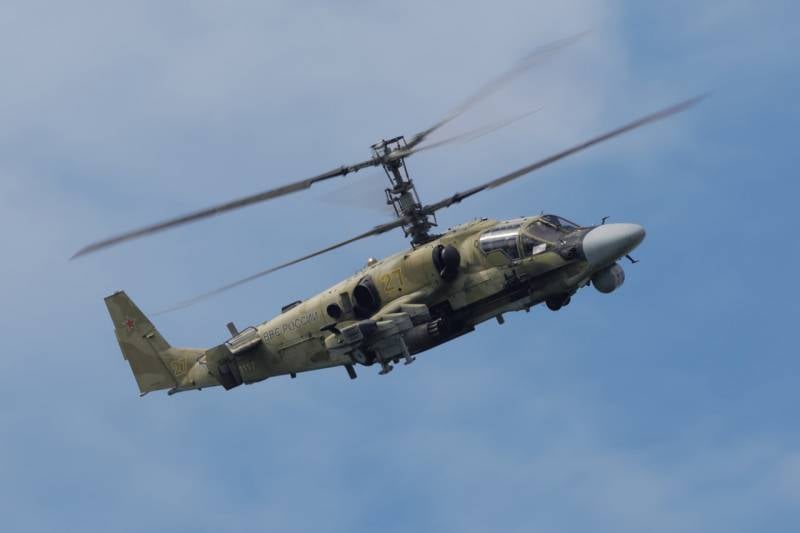The upgraded Ka-52M helicopter received new blades designed for the naval version of the Ka-52 Katran

The modernized attack helicopter Ka-52M, whose state tests have reached the finish line, in addition to new armor and protection, received new composite blades with heating elements that prevent them from icing. This was reported by a source in the Russian defense industry.
New composite blades with heating elements were developed for the naval version of the Ka-52K Katran helicopter, but after testing, it was decided to introduce them into the upgraded Ka-52M as well. The blades are fully composite, which excludes their destruction in case of minor damage. On aluminum and metal blades, damage leads to their further destruction.
- leads TASS source words.
Earlier it was reported that the Ka-52M received new armor and a new airborne defense system, a radar with AFAR, a VK-2500 engine, new aviation tires of increased wear resistance and new propeller blades. A new sighting and navigation system has been installed. The armament was unified with another rotorcraft - the Mi-28NM. The Ka-52M's arsenal includes the Hermes-A long-range missiles, the Whirlwind-M guided anti-tank missiles, and the LMUR light multi-purpose guided missile, also known as the 305 product.
The helicopter has already been tested in the NVO zone in Ukraine, and state tests are currently being completed. The manufacturer of Ka-52 helicopters announced the readiness of the lines for serial production of the upgraded machine.
Information